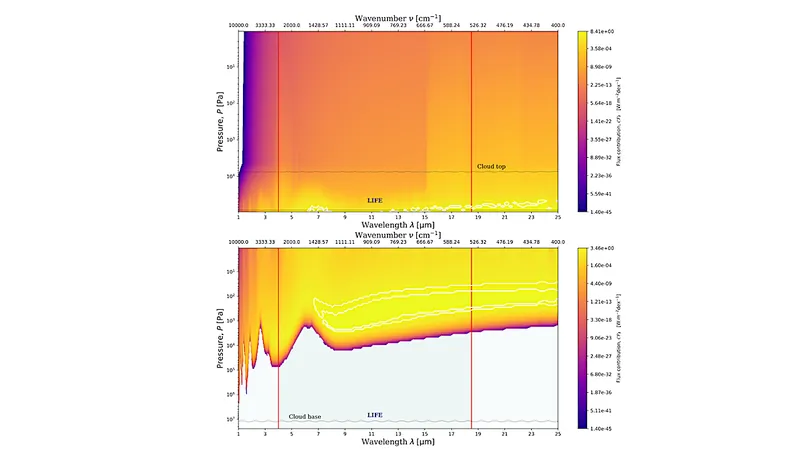
Unveiling the Mysteries of Teegarden's Star b: How Water Clouds Could Transform Our Understanding of Alien Atmospheres!
2024-11-16
Author: Wei
Introduction
The quest to explore non-transiting terrestrial planets is entering a thrilling new phase, with upcoming observatories like the LIFE (Large Interferometer For Exoplanets) at the forefront. Among the most intriguing targets is Teegarden’s Star b, a potentially habitable exoplanet that has sparked the interest of astronomers worldwide.
Advanced Atmospheric Modeling
Recent studies employing a sophisticated one-dimensional atmospheric model have delved into the role of water clouds on the emission spectrum of Teegarden b. This model incorporates advanced features such as real-gas radiation and a multi-species pseudo-adiabatic convection-condensation scheme, allowing researchers to explore how cloud coverage influences the emission characteristics of this fascinating planet.
Key Findings on Cloud Coverage
One significant finding revealed that while increased cloud coverage does reduce the emergent flux, the drop is not drastic — even at 90% cloud coverage, the flux only decreases by about one order of magnitude. This unexpected resilience means that LIFE can still accurately detect variations in the cloud cover fraction for wavelengths longer than 7 microns.
LIFE's Sensitivity
Particularly exciting is LIFE’s capability to discern cloud cover fractions as low as 10% with just a 24-hour integration time, and it becomes even more precise over a week of measurements. Such extended observation not only enhances sensitivity but also offers the key advantage of identifying local variations in spectral flux, which is crucial for pinpointing specific molecules in the atmosphere. This capability holds even if Teegarden’s Star b resembles a CO2-rich Venus analog, although lower nitrogen partial pressures could complicate the analysis.
Conclusion
In essence, LIFE demonstrates remarkable potential in detecting and analyzing the atmospheric compositions of distant worlds, maintaining a nuanced sensitivity to subtle variations in cloud cover. As researchers continue to refine their models and techniques, we inch closer to unveiling the secrets of Teegarden's Star b and possibly many more exoplanets beyond our solar system.
Stay tuned to see how these groundbreaking advancements may one day reshape our understanding of life beyond Earth!



 Brasil (PT)
Brasil (PT)
 Canada (EN)
Canada (EN)
 Chile (ES)
Chile (ES)
 Česko (CS)
Česko (CS)
 대한민국 (KO)
대한민국 (KO)
 España (ES)
España (ES)
 France (FR)
France (FR)
 Hong Kong (EN)
Hong Kong (EN)
 Italia (IT)
Italia (IT)
 日本 (JA)
日本 (JA)
 Magyarország (HU)
Magyarország (HU)
 Norge (NO)
Norge (NO)
 Polska (PL)
Polska (PL)
 Schweiz (DE)
Schweiz (DE)
 Singapore (EN)
Singapore (EN)
 Sverige (SV)
Sverige (SV)
 Suomi (FI)
Suomi (FI)
 Türkiye (TR)
Türkiye (TR)
 الإمارات العربية المتحدة (AR)
الإمارات العربية المتحدة (AR)